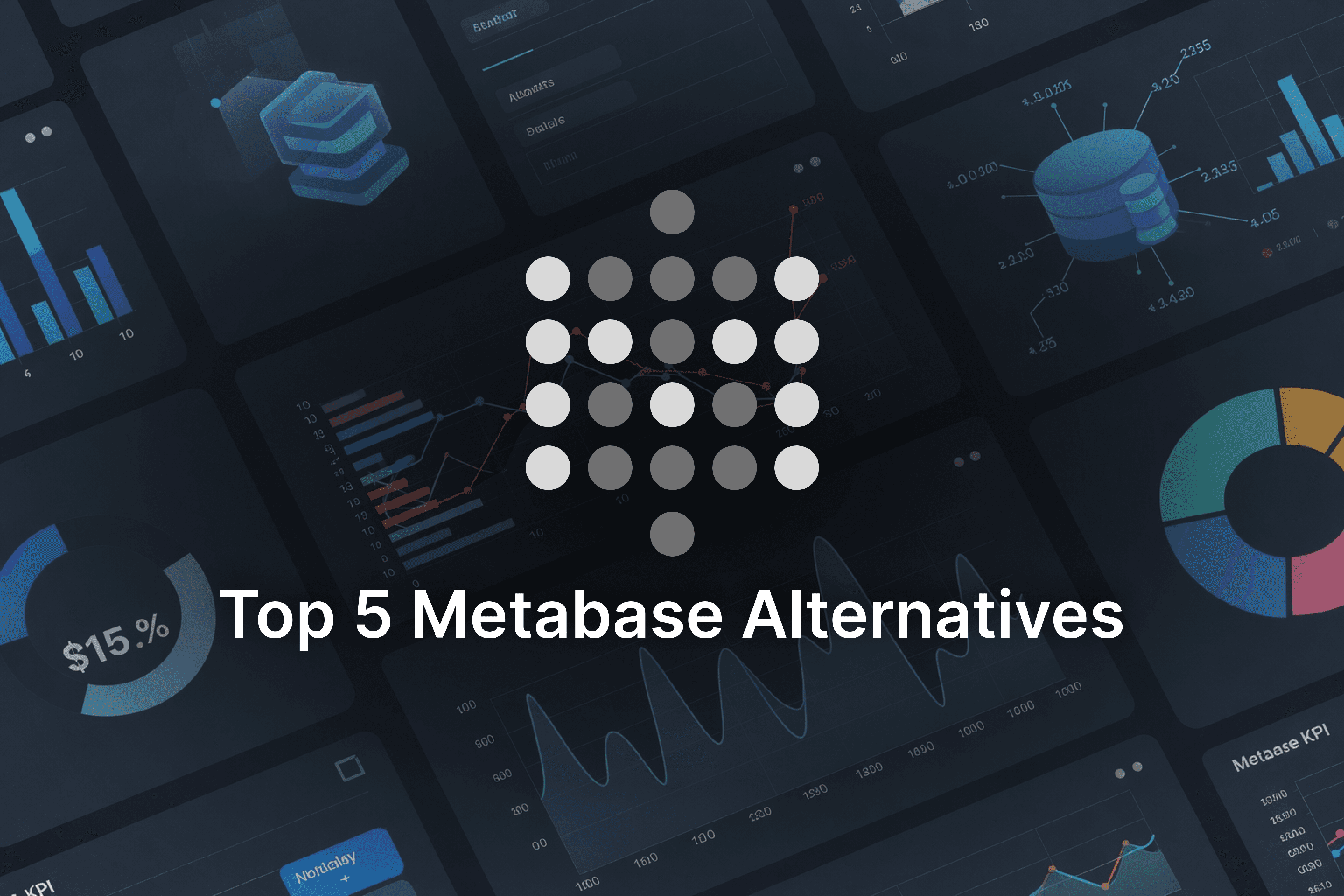In today’s data-driven world, businesses that move fastest often win. But traditional analytics workflows, waiting days for IT-generated reports, slow decision-making. Self-service analytics changes this by giving teams the ability to explore, analyze, and visualize data on their own. This guide explains what self-service analytics is, why it’s essential, key features to look for, best practices to implement it successfully, and how it compares to traditional analytics methods.

What is Self-Service Analytics?
Self-service analytics enables business users, especially non-technical ones to access and manipulate data through intuitive tools like drag-and-drop dashboards and certified datasets.
Unlike traditional BI, which often requires coding or SQL expertise, self-service analytics removes technical barriers. It empowers everyone in the organization to make data-driven decisions faster and with more confidence.
With features such as role-based access controls, data dictionaries, and audit logs, modern self-service analytics platforms strike the right balance: freedom for users while maintaining governance and trust.
Quick Fact: According to a Gartner survey of 400 finance executives, 49% said that self-service data and analytics is seen as a driver of employee productivity.
Why is Self-Service Analytics Essential?
Faster decision-making: Teams can ask questions and get answers immediately instead of waiting for IT-generated reports.
Reduced IT burden : IT teams spend less time on ad-hoc reporting and can focus on strategic projects.
Increased data literacy : User-friendly tools help employees better understand and trust their data.
Improved data trust : Certified datasets and governance mechanisms ensure accuracy and compliance.
Data democratization : Every department gains the power to act on insights without bottlenecks.
Traditional Analytics vs Self Service Analytics
Aspect | Traditional Analytics | Self-Service Analytics |
|---|---|---|
User Access | Limited to analysts and IT | Accessible by all business users |
Tool Complexity | Requires SQL, coding, advanced skills | Intuitive drag-and-drop interfaces |
Time to Insight | Hours to days | Minutes to hours |
IT Dependency | High, for report creation and data prep | Low, empowers users directly |
Data Governance | Centralized but bottlenecked | Governed with access controls & audit logs |
Flexibility | Limited, predefined reports | Customizable and on-demand |
Key Features of Governed Self-Service Analytics Platforms

Drag-and-Drop Dashboards : Build reports without coding.
Certified Datasets : Verified, standardized metrics for consistent insights.
Data Dictionary : Clear definitions so users understand exactly what each metric means.
Role-Based Access Controls : Protect sensitive data by defining who can view, edit, or publish reports.
Audit Logs in Analytics : Track activity to ensure accountability and compliance.
Seamless Integrations : Connect with CRMs, ERPs, cloud apps, and databases for a unified view.
Real World Example of Self Service Analytics
Self-service analytics democratizes data access across the organization. Even employees without technical skills can:
Discover insights quickly using easy data exploration tools
Answer ad-hoc business questions independently
Share interactive dashboards for cross-team collaboration
Gain confidence in decisions with trusted, certified datasets
Example: A marketing team adopted a governed self-service analytics platform. Within six months, they reported a 40% drop in ad-hoc data requests to the central analytics team. This freed resources, accelerated campaign optimizations, and boosted ROI.
Use Cases Across Departments
Marketing → Analyze campaign performance without waiting for IT reports.
Finance → Track revenue, expenses, and forecasts in real time.
HR → Monitor hiring pipelines, retention rates, and employee satisfaction.
Operations → Optimize supply chain and logistics with live dashboards.
This shows how self-service analytics enables cross-departmental insights, leading to smarter, data-driven strategies.
Best Practices to Enable Self-Service Analytics
Assess readiness – Evaluate current data literacy and infrastructure.
Start small – Launch a pilot project with one department.
Train users – Provide role-based workshops and templates.
Enforce governance – Use certified datasets, role-based access, and audit logs.
Iterate continuously – Gather feedback and improve usability over time.
Pro Tip: Begin with departments facing frequent ad-hoc data requests. Early wins build momentum and encourage company-wide adoption.
Future of Self-Service Analytics

With AI and natural language processing, the future of analytics is even more user-friendly:
Ask data questions in plain English instead of using SQL.
AI-driven insights will automatically surface anomalies or trends.
Predictive analytics will guide decision-making before issues arise.
Self-service analytics is evolving into self-service intelligence—bringing businesses one step closer to real-time, autonomous decision-making.
Frequently Asked Questions (FAQs)
Q1. What is self-service analytics?
Self-service analytics lets business users independently explore and analyze data using intuitive dashboards and governed datasets—no coding required.
Q2. How does self-service analytics reduce IT burden?
By enabling employees to create their own reports, it decreases repetitive ad-hoc requests, freeing IT teams for high-value projects.
Q3. Is self-service analytics secure?
Yes. Governed platforms use role-based access controls and audit logs to maintain data privacy, security, and compliance.
Q4. What are certified datasets?
Certified datasets are pre-validated, standardized data sources that ensure everyone in the organization works with trusted, consistent metrics.
Conclusion
In a competitive market, speed and trust in decision-making are everything. Self-service analytics empowers organizations to unlock insights faster, reduce IT bottlenecks, and build a culture of data literacy and data-driven decision making.
The key is to implement a governed analytics platform that balances accessibility with control—so every employee can explore data with confidence while maintaining security and compliance.
Ready to take the leap? Start by piloting self-service analytics.









